Disclosure: This article contains affiliate links. We may earn a commission from purchases at no extra cost to you, which helps our travel content.
The moment my taxi pulled away from Alfonso Bonilla Aragón International Airport, my driver cranked up the volume on what I'd soon learn was a Grupo Niche classic. 'Welcome to Cali,' he grinned, catching my eye in the rearview mirror. 'The world capital of salsa.' That was three years ago, and since then, I've returned to Colombia's third-largest city five times specifically for its unparalleled nightlife. What began as professional curiosity (analyzing entertainment economies across Latin America) evolved into a personal obsession with the city's distinctive salsa culture. While Bogotá offers cosmopolitan diversity and Medellín delivers reggaeton-fueled parties, Cali exists in its own rhythmic dimension—a city where salsa isn't just music but the collective heartbeat of 2.4 million caleños. Having navigated Hamburg's techno warehouses and Bangkok's rooftop bars, I can confidently say that nothing compares to the electric atmosphere of a Cali salsa club at 2 AM, where age, nationality, and dance experience dissolve in the shared pursuit of perfect rhythm.
Understanding Cali's Salsa DNA
Before diving into specific venues, it's crucial to understand what makes Cali's salsa scene unique. Unlike the romanticized Cuban-style that dominates global salsa perception, Cali salsa (salsa caleña) is characterized by its lightning-fast footwork, vertical body movement, and minimal upper body motion. Locals often refer to it as salsa choke or estilo caleño—a style that emerged in the 1970s when vinyl records from New York and Puerto Rico reached Colombia's Pacific coast.
The statistical reality is impressive: Cali boasts over 200 registered salsa schools, approximately 80 active salsa orchestras, and hosts the annual World Salsa Festival attracting 5,000+ international dancers. These aren't tourist attractions manufactured for visitors; they're organic extensions of a city where an estimated 65% of residents identify salsa dancing as a personal hobby.
What struck me during my visits was how democratized the dance remains across socioeconomic lines. While researching nightlife economics for my business analysis work, I interviewed venue owners who emphasized that salsa transcends class divisions in Cali. From working-class neighborhoods like Juanchito to upscale venues in Granada, the fundamental culture remains consistent: passionate dancing, multi-generational participation, and a remarkable openness to newcomers.
My first night in Cali, I stood awkwardly at the edge of the dance floor at Tin Tin Deo (more on this iconic spot later), when an elderly woman—easily in her seventies—pulled me into the crowd with surprising strength. 'Tranquilo, gringo,' she laughed, patiently guiding my clumsy steps. This exemplifies the Cali approach: dance is not a performance but a birthright, and everyone is welcome to participate regardless of skill level.
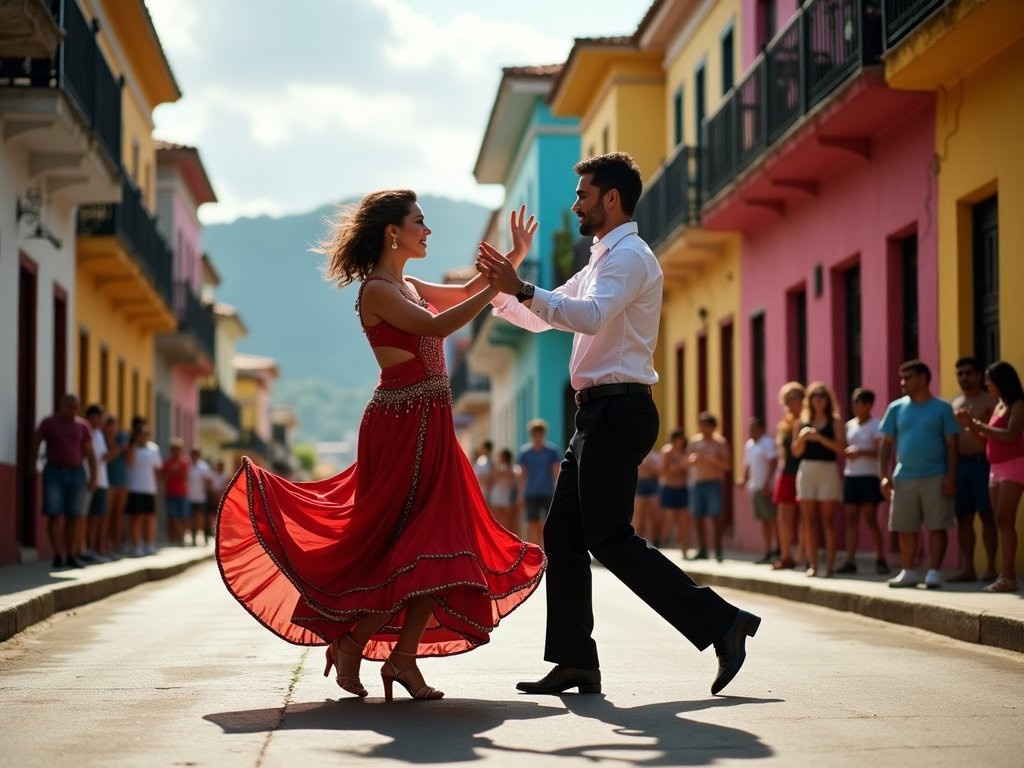
💡 Pro Tips
- Listen to classic Cali salsa artists (Grupo Niche, Orquesta Guayacán, Fruko y Sus Tesos) before visiting to familiarize yourself with the sound
- Don't be intimidated by the speed—locals appreciate foreigners who try, regardless of skill level
- Wear comfortable shoes with leather or suede soles that won't stick to the floor during quick footwork
Essential Venues: From Legendary Clubs to Hidden Gems
After multiple research trips (and countless blisters), I've categorized Cali's salsa venues into three tiers to help you navigate based on your experience level and preferences.
Tier 1: The Legendary Institutions
Tin Tin Deo (Barrio San Antonio) stands as the undisputed historical epicenter of Cali's salsa movement. Operating since 1971, this modest-looking venue with its red façade transforms into a sweat-soaked temple of rhythm Thursday through Saturday. What makes Tin Tin Deo special isn't flashy décor but authenticity—the crowd spans from university students to gray-haired veterans who've danced here for decades. The club maintains a substantial vinyl collection, and DJs frequently incorporate classic records into their sets.
La Topa Tolondra (San Antonio) represents the perfect middle ground between tradition and modernity. The two-story venue attracts a slightly younger crowd while maintaining rigorous musical standards. Their Wednesday 'Guarapo' nights feature live bands and have become my personal favorite for observing top-tier dancers in action. The second floor offers breathing room when the main dance floor becomes overwhelmingly packed.
Tier 2: Mid-Range Excellence
Zaperoco Bar (Granada) delivers consistent quality with slightly more space than the historic venues. Their Thursday 'Pachatica' events feature excellent live orchestras in rotation. The sound system here deserves special mention—crisp enough to distinguish every instrument in complex arrangements.
MalaMaña (Granada) represents the new wave of Cali salsa venues with a contemporary industrial aesthetic that doesn't compromise on musical substance. Their cocktail program stands out among salsa venues, making it ideal for groups with mixed dancing enthusiasm. I've found their Sunday afternoon sessions particularly enjoyable—less crowded but equally energetic.
Tier 3: Off-The-Beaten-Path
El Rincón de Héctor (Barrio Obrero) epitomizes the authentic neighborhood salsa experience. This family-run establishment feels more like someone's living room than a commercial venue. The owner, Héctor, maintains a legendary collection of rare salsa records and often shares stories about salsa's golden era between sets. The crowd here skews older and more serious about dance technique.
For capturing these unforgettable nights, I've found my compact camera invaluable—its exceptional low-light performance and unobtrusive size make it perfect for documenting the salsa scene without disrupting the authentic experience or drawing unwanted attention.
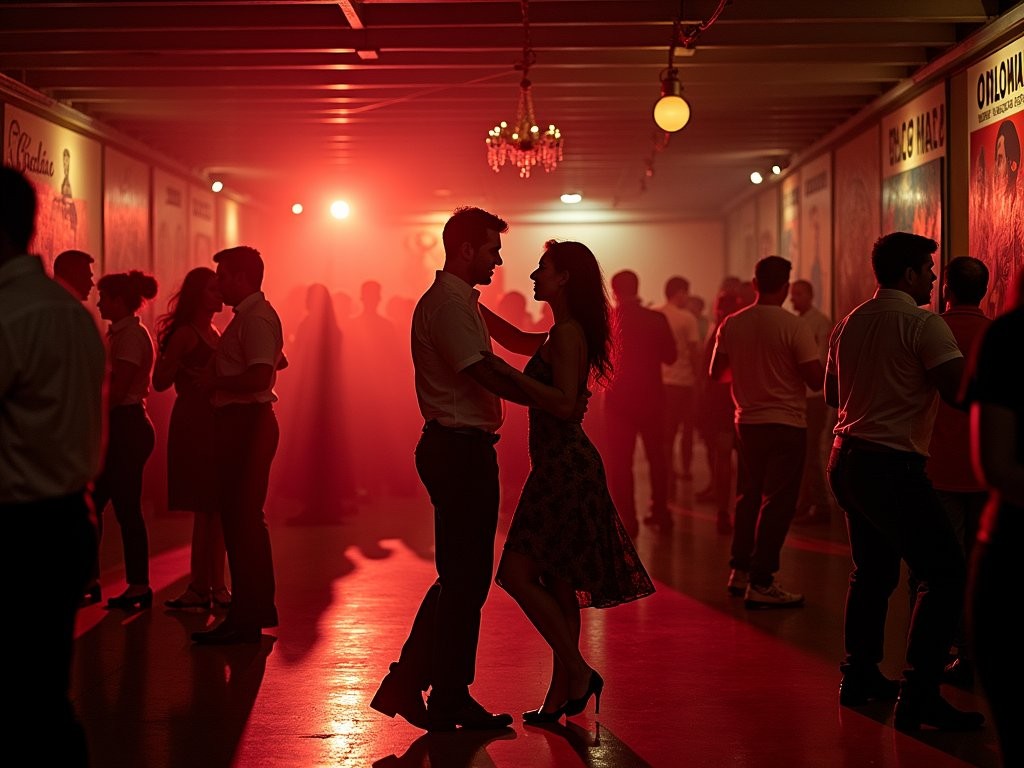
💡 Pro Tips
- Arrive before 10:30 PM to avoid long lines at popular venues like Tin Tin Deo and La Topa Tolondra
- Most clubs charge 15,000-25,000 COP ($4-7 USD) cover, often including one drink
- Dress code is generally casual but neat—closed shoes are required at most venues
Learn to Dance: Crash Courses for Visitors
If you're visiting Cali without prior salsa experience, you're missing half the experience by remaining a spectator. Fortunately, the city offers numerous options for rapid skill acquisition, from formal academies to informal pre-club workshops.
Structured Learning Options
Sondeluz Academia (El Peñón) has refined the art of teaching foreigners through their 'Salsa Express' program—a three-day intensive course designed specifically for visitors. What distinguishes their approach is the focus on practical social dancing rather than performance choreography. Their instructors speak sufficient English to communicate technical concepts, though classes primarily run in Spanish. A 3-day package costs approximately 180,000 COP ($50 USD)—remarkable value considering the quality.
Swing Latino (Granada) gained international fame after appearing on the World of Dance television competition. While primarily focused on performance training for serious dancers, they offer visitor workshops every Saturday at 2 PM. These sessions provide excellent technical foundations, though they're less focused on immediate social dancing application.
During my second visit to Cali, I enrolled in Sondeluz's program, skeptical that three days could meaningfully impact my dancing. The transformation wasn't miraculous—I didn't become a salsa master—but the focused training on basic steps and turns gave me sufficient confidence to participate rather than observe. This fundamentally changed my nightlife experience, transforming me from awkward outsider to welcome participant.
Informal Learning
For those with limited time or structured-learning aversion, several clubs offer pre-party lessons:
La Topa Tolondra hosts 'Salsa Para Todos' (Salsa For Everyone) workshops every Thursday at 8 PM before the main dance begins. For 25,000 COP ($7 USD), you receive an hour of instruction plus entry to the club—an efficient combination of learning and application.
Sabor Manicero (San Antonio) organizes 'Gringo Night' on Tuesdays—despite the potentially off-putting name, these sessions provide excellent beginner-friendly instruction in a relaxed environment with higher-than-usual English proficiency among staff.
Whichever learning path you choose, comfortable footwear is essential. After destroying two pairs of casual shoes through intensive dancing, I invested in proper dance shoes. The suede soles allow proper pivot without the ankle strain of rubber-soled alternatives—worth every penny for even a weekend of serious dancing.
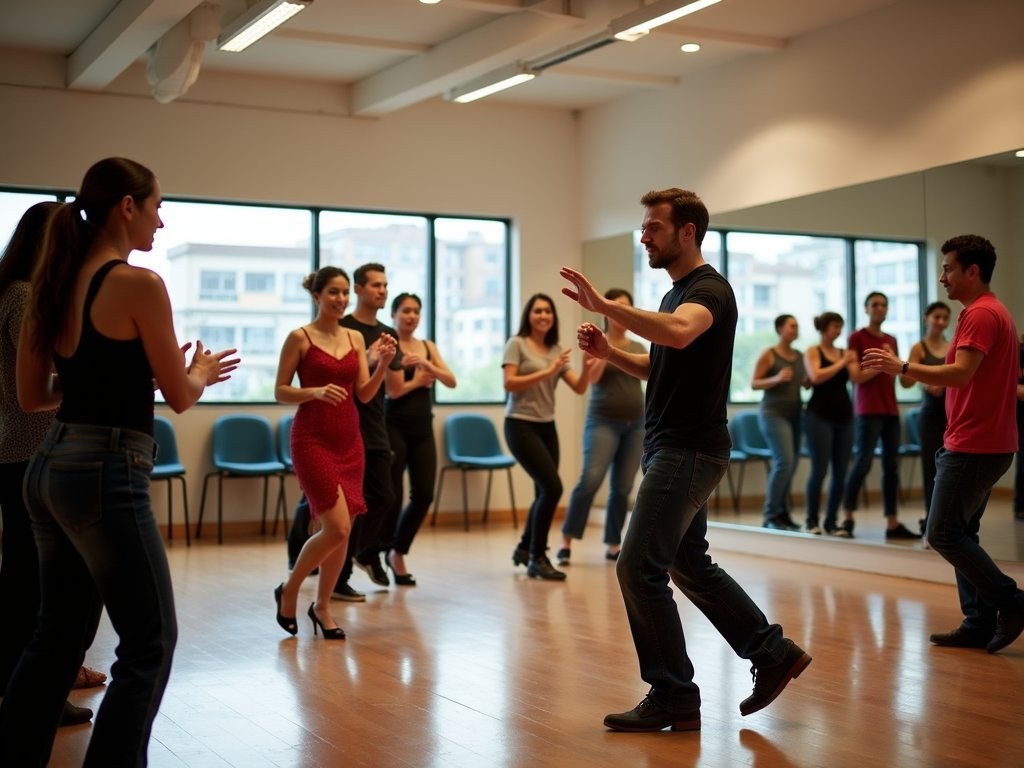
💡 Pro Tips
- Book dance classes at least one day before your intended nightclub outing to apply what you've learned
- Focus on mastering basic steps rather than complex turns for your first salsa club experience
- Consider private lessons (80,000-100,000 COP/$22-28 USD per hour) if your schedule is tight
The Vibe Shift: Cali's Nightlife Timeline
Understanding Cali's nightlife rhythm is crucial for maximizing your experience. Unlike European cities where peak hours might hit at 1-2 AM, Cali operates on its own distinctive timeline that visitors should adapt to rather than resist.
8:00-10:00 PM: The Warm-Up
Caleños rarely begin their evening at clubs. Instead, the night typically starts at neighborhood fuentes de soda (soda fountains) or casual eateries where friends gather for pre-dancing sustenance. Popular spots include La Colina in Granada and Lenos & Carbón in El Peñón, where groups linger over hearty meals and initial rounds of aguardiente (the anise-flavored local spirit).
As a solo traveler, I've found these early hours ideal for people-watching and acclimatizing to the local pace. During my visits, I often grab dinner at Platillos Voladores in San Antonio, where the creative Colombian fusion menu provides substantial fuel for the dancing ahead.
10:30 PM-1:00 AM: Prime Instruction Time
Contrary to what visitors might expect, this timeframe—not the later hours—offers the best learning opportunities. Clubs are less crowded, music tends to be played at slightly lower volumes, and experienced dancers are more patient with beginners. At venues like Zaperoco and MalaMaña, this window presents the perfect opportunity to request dances with skilled partners willing to guide newcomers.
During my first visit, I made the rookie mistake of arriving at Tin Tin Deo at 1:30 AM, finding myself immediately overwhelmed by the packed dance floor and expert-level dancing. On subsequent trips, I've adopted the local approach: arrive earlier, establish rapport with regular dancers, and gradually build confidence as the night intensifies.
1:00-4:00 AM: Peak Energy
This is when Cali's nightlife reaches its legendary status. Dance floors become packed, music tempos increase, and the collective energy achieves an almost transcendent quality. What fascinates me from an analytical perspective is how the dancing actually improves despite increased alcohol consumption—a testament to how deeply ingrained these movements are in local muscle memory.
For visitors, this intensity can be overwhelming. I recommend earplugs to protect your hearing while preserving music clarity—the volume in peak hours regularly exceeds safe listening levels, and these particular earplugs reduce volume without muffling the crucial musical details that drive the dance.
4:00 AM-Sunrise: The Legendary Afterhours
While many international nightlife scenes claim to go until dawn, Cali actually delivers on this promise. Venues like Tin Tin Deo and La Topa Tolondra regularly maintain energy until 6 AM on weekends. The post-4 AM crowd displays remarkable endurance, with dancing quality often improving as less committed participants filter out.
For those with sufficient stamina, the true Cali experience continues with post-dancing breakfast at 24-hour spots like Café Mulato in Granada, where dancers refuel with traditional caldo de costilla (beef rib soup) while dissecting the night's musical highlights and standout performances.

💡 Pro Tips
- Stay hydrated between dances—the physical exertion combined with Cali's warm climate can lead to rapid dehydration
- Pace your aguardiente consumption—the sweet anise flavor masks its potency, and dancing coordination deteriorates rapidly with overconsumption
- Don't plan morning activities after a serious salsa night—recovery time is essential
Beyond Traditional Salsa: Cali's Evolving Nightlife
While Cali rightfully claims its salsa capital title, the city's nightlife ecosystem has diversified considerably in recent years. For groups with varied musical preferences or those seeking a break from salsa intensity, several alternative scenes have emerged worth exploring.
The New Wave: Electronic Fusion
Alterno Bar (Granada) represents the vanguard of Cali's alternative nightlife, where traditional Colombian rhythms meet contemporary electronic production. Their 'Electro-Tropical' nights feature DJs blending salsa samples with house beats—a fascinating cultural hybrid that attracts a younger, creatively-oriented crowd. What makes these events particularly interesting is observing how traditional salsa dancers adapt their movements to these modified rhythms.
During my most recent visit, I spent a fascinating evening at Alterno, where the crowd included both traditional salsa purists experimenting with new sounds and electronic music fans discovering Colombian rhythmic traditions. The resulting dance floor featured an eclectic mix of movement styles that felt genuinely innovative.
International Influence
Bourbon St. (Granada) caters to Cali's growing international community with a more globally-influenced playlist spanning reggaeton, hip-hop, and commercial house music. While lacking the distinctive character of salsa-focused venues, it provides a familiar reference point for travelers seeking occasional respite from local sounds.
As someone who appreciates cultural authenticity, I initially dismissed these international-style venues as tourist traps. However, I've come to recognize their importance in Cali's nightlife ecosystem—they serve as accessible entry points for visitors gradually acclimating to the city's distinctive rhythmic landscape.
Live Music Beyond Salsa
Homero Escobar Cultural (San Antonio) showcases Colombia's broader musical heritage through live performances spanning cumbia, vallenato, and champeta. Their Thursday 'Folkloric Fusion' events feature traditional instruments in contemporary arrangements—an excellent opportunity to appreciate Colombia's regional diversity beyond Cali's salsa dominance.
For capturing the full spectrum of these musical experiences, I've found my portable recorder invaluable. With permission from performers, I've collected hours of field recordings that capture the nuanced differences between traditional and emerging sounds—audio souvenirs that evoke Cali's energy more vividly than photographs.
Sustainable Partying
A note on environmental consciousness: Cali's nightlife scene is gradually embracing sustainability, with venues like La Topa Tolondra eliminating plastic straws and implementing waste separation systems. As someone committed to responsible tourism, I've been encouraged by these developments, though opportunities remain for further progress in this area.

💡 Pro Tips
- Visit alternative venues mid-week when they're less crowded but still energetic
- Many fusion events are monthly rather than weekly—check venue social media for current schedules
- Granada neighborhood offers the highest concentration of diverse nightlife options within walking distance
Practical Considerations: Safety, Transport, and Accommodation
While Cali's rhythmic allure is undeniable, practical considerations ensure your salsa immersion remains joyful rather than stressful. Based on multiple visits, I've developed systems for navigating the city's nightlife landscape safely and efficiently.
Strategic Accommodation
Location significantly impacts your nightlife experience. The San Antonio neighborhood offers the ideal balance for visitors: historic charm, walking distance to key venues, and sufficient tourism infrastructure. During my visits, I've found boutique hotels like Hotel Casa San Antonio and Alko Hotel Casa Nispero provide the perfect combination of local character and necessary amenities.
The Granada and El Peñón neighborhoods offer more upscale options with excellent restaurant access, though they require short taxi rides to reach the most authentic salsa venues. Budget travelers should consider hostels like El Viajero in San Antonio, which organizes salsa-focused social activities and attracts dance-oriented travelers.
My personal preference has evolved toward short-term apartment rentals in San Antonio, which provide post-dancing recovery space and kitchen facilities for preparing dancer-friendly snacks and recovery meals. The travel water filter has proven invaluable in my accommodation—Cali's tap water quality varies, and maintaining proper hydration is essential when dancing for hours in warm venues.
Transportation Logistics
Cali's transportation landscape requires strategic navigation, particularly for late-night returns. While the city offers public buses and a limited MIO (Masivo Integrado de Occidente) system, these options aren't practical for nightlife participation due to limited late-night service and safety considerations.
Ride-sharing services operate in Cali but experience frequent supply shortages during peak nightlife hours. I recommend establishing a relationship with a reliable taxi driver for your visit—most hotels can arrange this, and the peace of mind justifies the slightly higher cost. Expect to pay 15,000-25,000 COP ($4-7 USD) for most nightlife-related journeys.
For venues in the Juanchito area across the Cali River, transportation requires additional planning. This historically significant salsa district offers authentic experiences but presents greater logistical challenges. Group transportation arranged through your accommodation is the recommended approach for visiting these venues.
Safety Considerations
Cali has made significant security improvements but still requires common-sense precautions, particularly in nightlife contexts:
- Use established taxi services or ride-sharing apps rather than hailing street cabs, especially after dark
- Keep minimal valuables when going dancing—a small amount of cash, one payment card, and a copy of your ID is sufficient
- Stay aware of your drink at all times in crowded venues
- Dance venues themselves are generally secure environments with established security protocols
I've found Cali to be welcoming and safety-conscious toward visitors, with venue staff often providing additional assistance to international guests. The city's economic reliance on cultural tourism has fostered a protective attitude toward visitors engaging with local traditions.
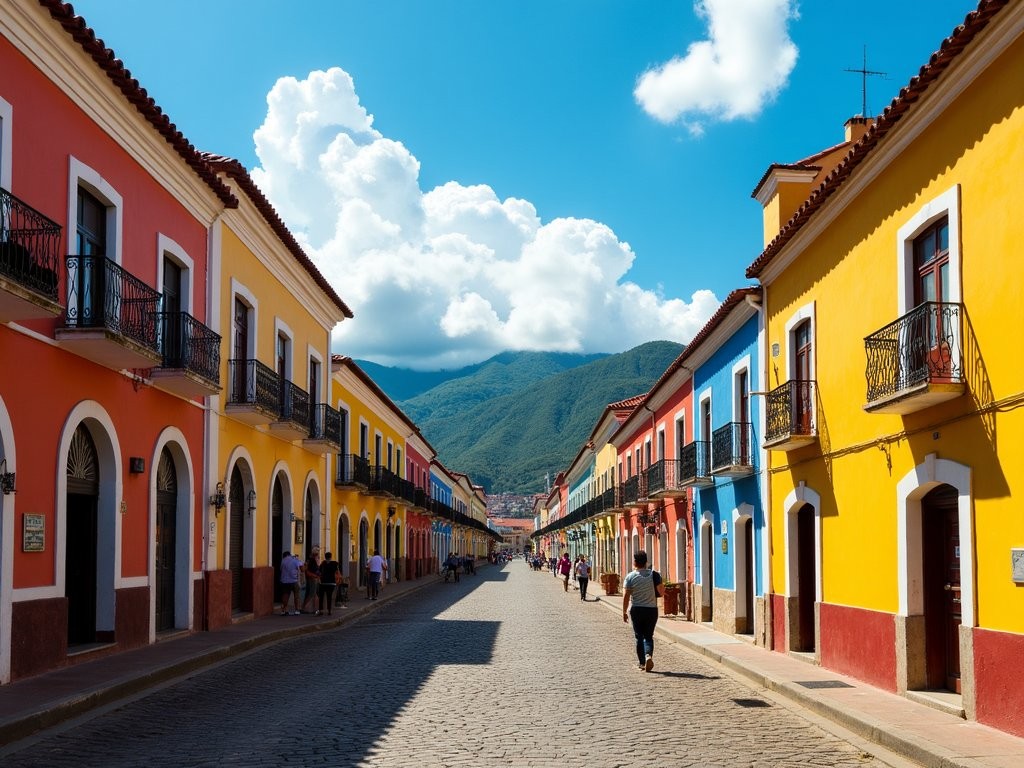
💡 Pro Tips
- Book accommodation in San Antonio neighborhood for the optimal balance of atmosphere and convenience
- Save your hotel's business card or address in your phone to show taxi drivers after late nights out
- Consider joining salsa hostel group outings even if you're not staying there—they provide safe, social nightlife access
Final Thoughts
As my flight lifted off from Cali after my most recent visit, I found myself already planning a return. What draws me back isn't just the dancing—though that would be reason enough—but the rare cultural authenticity that permeates the city's nightlife. In an era where globalization homogenizes urban experiences worldwide, Cali's salsa scene remains defiantly, gloriously distinctive.
For visitors willing to step beyond spectator status and participate—however clumsily at first—Cali offers something increasingly rare: a nightlife ecosystem that exists primarily for locals rather than tourists, yet welcomes outsiders who approach with respect and enthusiasm. The statistical analyst in me appreciates how the numbers validate Cali's cultural significance: 200+ salsa schools, 80+ orchestras, thousands of professional dancers. But the true magic transcends quantification—it lives in moments like watching septuagenarians outperform twenty-somethings on the dance floor at 3 AM, or experiencing the collective joy when a beloved classic prompts spontaneous sing-alongs across a packed venue.
Whether you're a dedicated dance enthusiast or simply curious about experiencing one of the world's most distinctive nightlife cultures, Cali rewards the journey. Pack comfortable shoes, bring your enthusiasm, and prepare to discover why they call it the world capital of salsa. Your feet may ache, but your spirit will soar.
✨ Key Takeaways
- Cali offers the world's most authentic and energetic salsa scene, with dancing continuing until sunrise most weekends
- Take dance lessons early in your visit to transform from spectator to participant in this participatory culture
- Base yourself in San Antonio neighborhood for the optimal balance of nightlife access and daytime charm
- The city operates on its own nightlife timeline—arrive at clubs earlier than you might elsewhere (10:30 PM) for the best experience
📋 Practical Information
Best Time to Visit
Year-round, though December's Feria de Cali offers the most intense salsa programming
Budget Estimate
$50-100 USD per day including accommodation, food, transportation, and nightlife
Recommended Duration
3-4 night weekend minimum to experience different venues and recover between dance sessions
Difficulty Level
Intermediate - Requires Basic Planning And Some Local Cultural Adaptation

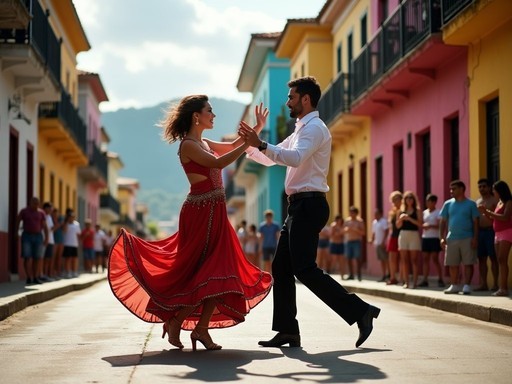
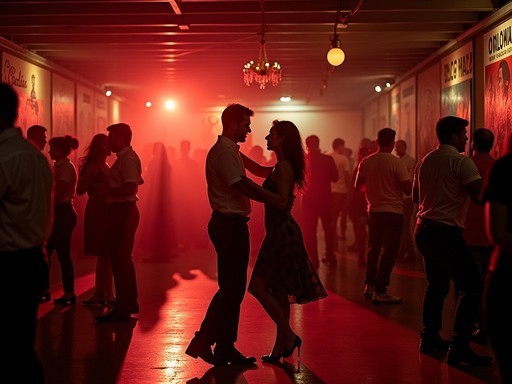
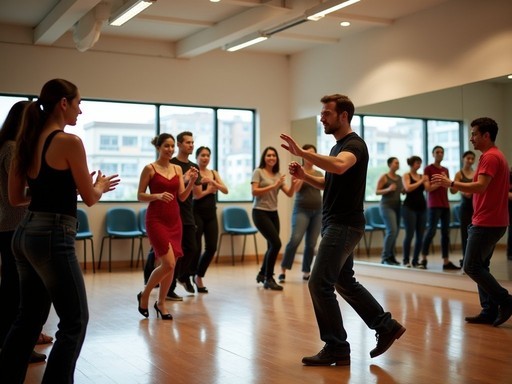
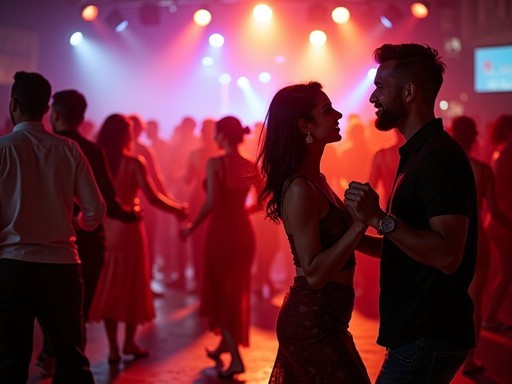
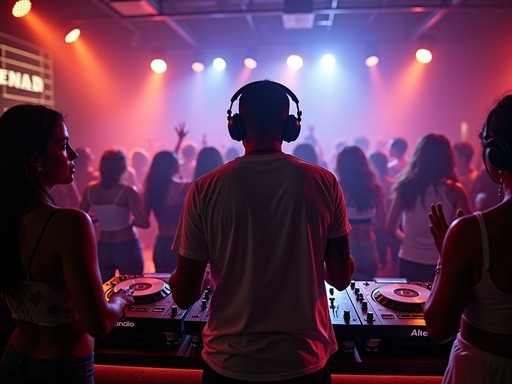



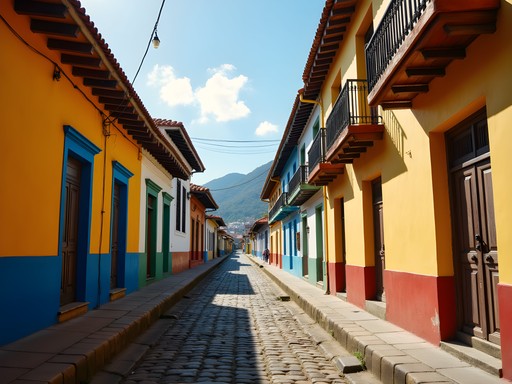
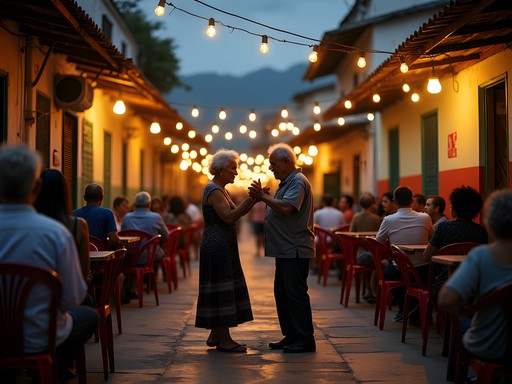
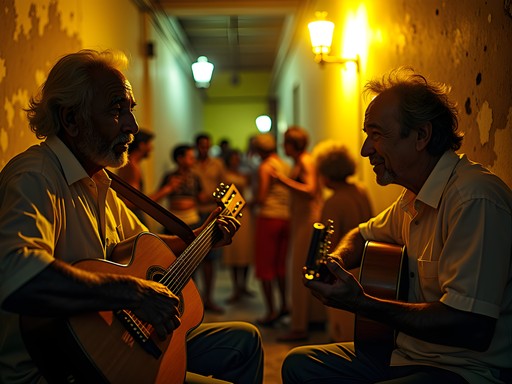
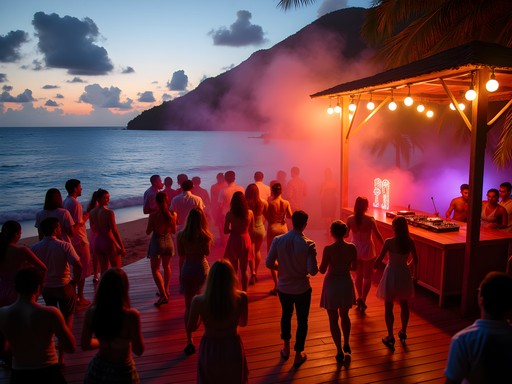
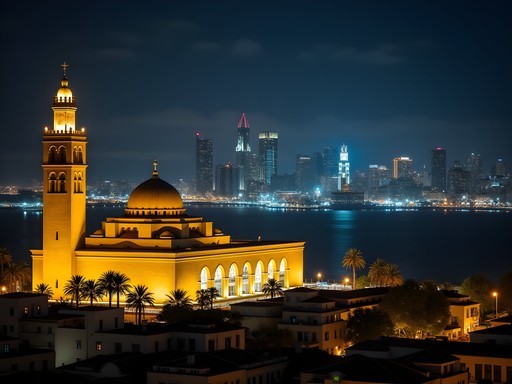
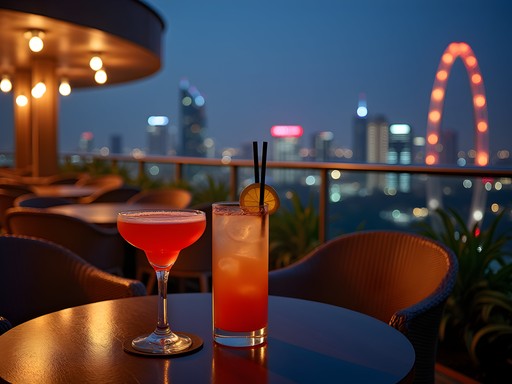
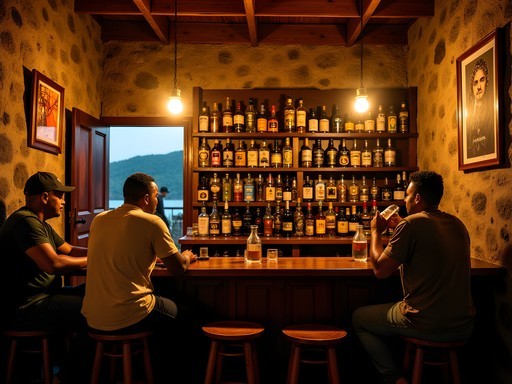
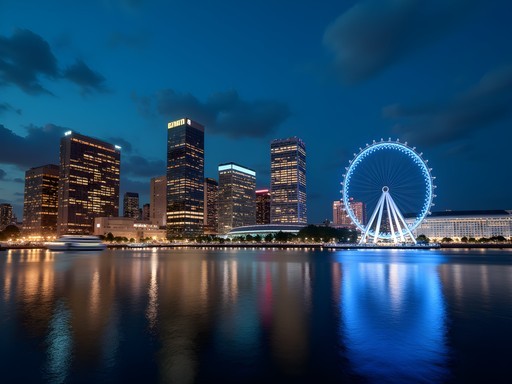
Comments
Olivia Sanchez
Alex, your timeline of Cali's nightlife is so accurate! I'd add one thing for the ladies reading this - the dress code is surprisingly formal at some venues. When I visited El Habanero, I almost felt underdressed in just jeans and a nice top. Many local women were in full dresses and heels! It's part of the culture to dress up for dancing. Also, don't miss the Sunday afternoon 'viejotecas' - daytime dance halls where the older generation shows off moves that will blow your mind. The one at Parque del Ingenio starts around 2pm and is a perfect way to ease into Cali's salsa scene if nightclubs feel intimidating.
coolvibes
Those night photos are FIRE! 🔥 Makes me wanna book a ticket right now!
Adam Nichols
Excellent breakdown of Cali's salsa scene, Alex. One thing I'd add for visitors is to understand the different salsa styles you'll encounter. Cali salsa (salsa caleña) is characterized by its speed and intricate footwork, quite different from Cuban or Puerto Rican styles. The locals dance on the balls of their feet with incredible speed! I'd recommend bringing proper dance shoes if you're serious about participating. I use dance shoes which provide the right amount of grip without sticking to those sometimes-sticky dance floors. Also worth noting that the scene at Zaperoco on Sundays is more relaxed and perfect for beginners to practice what they've learned.
stardiver
Just got back from Cali last month and this post is spot on! Tin Tin Deo was THE highlight of my trip. We went on a Thursday and the local dancers were incredible - they invited us to join and were so patient with teaching us. Pro tip: arrive before 10pm if you want a table, it gets packed FAST. And don't miss the street food vendors outside when you leave at 2am - those arepas saved my life after all that dancing!
Adam Nichols
Tin Tin Deo is legendary! Did you notice how the dance style there is slightly different from what you see at the more touristy spots? It's where you really see authentic Cali-style salsa in all its speed and footwork glory. I spent three months documenting the different salsa styles across Colombia, and Cali's remains the most distinctive.
vacationvibes
This looks amazing! I'm heading to Cali in October but I'm a total beginner at salsa. Which of those crash courses would you recommend for someone with two left feet?
Olivia Sanchez
I was in your shoes a few years ago! Definitely check out Sondeluz Dance School. They have special 3-day crash courses for tourists that are perfect for beginners. The instructors are super patient, and you'll be doing basic steps by the end of day one. Just enough to hit the dance floor at La Topa Tolondra without feeling completely lost!
vacationvibes
Thanks so much, Olivia! Will definitely look them up.
Bryce Diaz
Just got back from Cali two weeks ago and this post is spot on! I'd add El Rincón de Heberth to your list of essential venues - it's smaller and less touristy than some of the others, which means you'll be dancing with more locals. Pro tip: if you're serious about improving your salsa game, book private lessons with Jaime at Son de Luz dance school. Three one-hour sessions with him improved my dancing more than months of classes back home. Also, don't miss Sunday afternoons at Parque de la Música - free outdoor dancing with families and dancers of all ages. Perfect way to recover from Saturday night while still keeping the salsa vibes going!
summerfan
Which club would you recommend for absolute beginners? I have zero dance experience but really want to try!
moonlife
La Topa Tolondra has a really welcoming vibe! They sometimes do beginner lessons early in the evening before the regular crowd arrives.
moonlife
OMG ALEX!!! Your post brought back ALL the memories!!! I spent two weeks in Cali last summer and it was LIFE-CHANGING! The music, the energy, the people - nothing compares!!! I even bought dance shoes before my trip and they were perfect for those long nights. Still listening to that Grupo Niche playlist you recommended!!! 💃🔥
journeyclimber
YESSS! Cali is THE BEST! Been there three times now and the energy never gets old! Alex, you totally captured the essence of what makes this city so special. That part about the timeline is spot on - I remember being so confused my first night when we showed up at 9pm and places were empty 😂 Pro tip for anyone going: don't miss the Sunday afternoon sessions at Delirio if they're performing while you're there. It's like Cirque du Soleil meets salsa competition and absolutely mind-blowing! Also, the street food around the clubs after 2am is LIFE-CHANGING. Those arepas with cheese saved me more than once!
mountaindiver
Thanks for the Delirio tip! Just checked and they have a show during my visit. Tickets booked!
hikingseeker
How safe is it for solo travelers? Planning to visit in January.
moonlife
I went solo last year! Stick to the main areas, use registered taxis at night, and you'll be fine. The dance community was super welcoming!
hikingseeker
Thanks for the reassurance! Can't wait to experience it.
Venture X
Premium card with 2X miles, $300 travel credit, Priority Pass